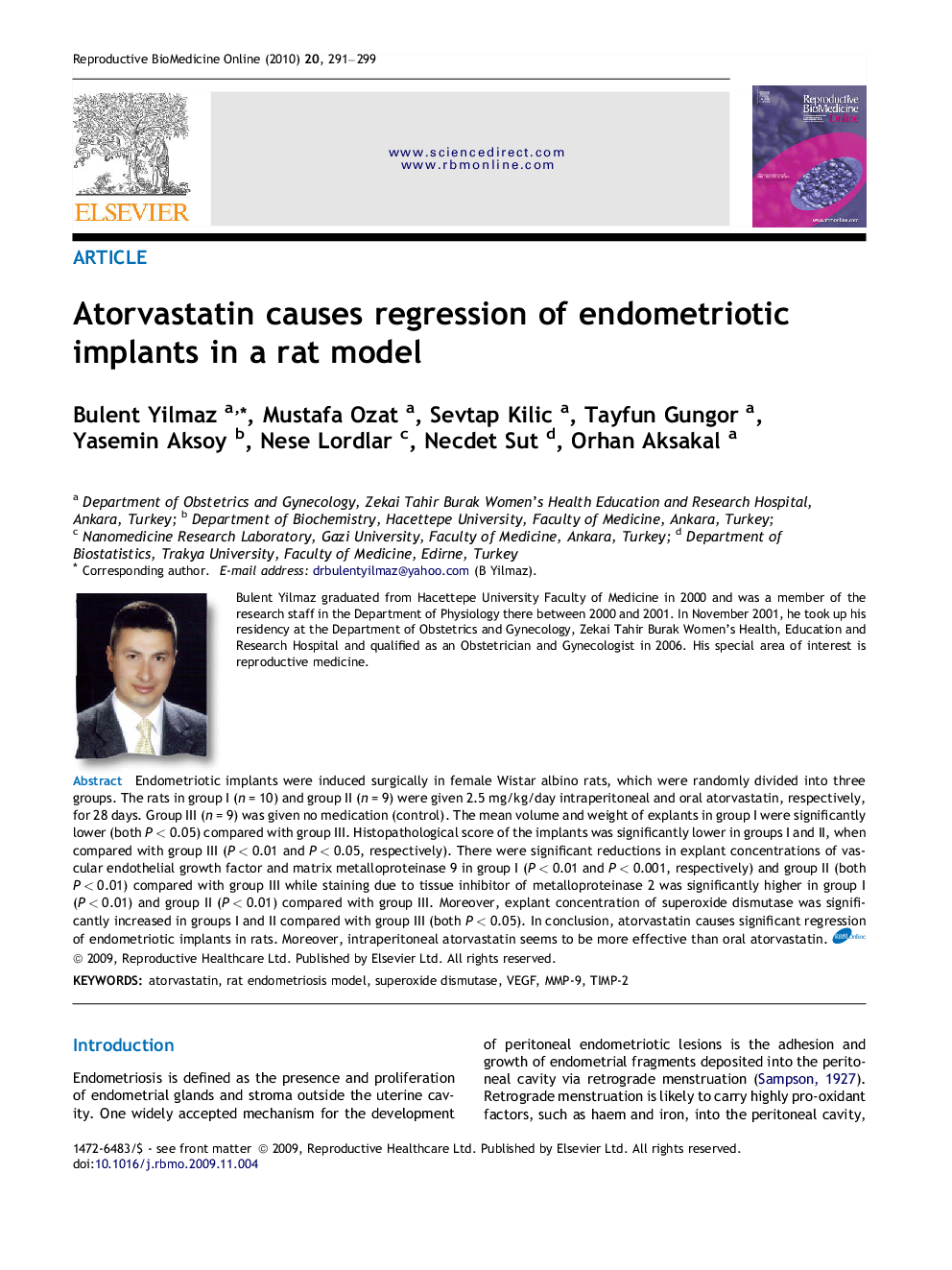| Article ID | Journal | Published Year | Pages | File Type |
|---|---|---|---|---|
| 3971019 | Reproductive BioMedicine Online | 2010 | 9 Pages |
Endometriotic implants were induced surgically in female Wistar albino rats, which were randomly divided into three groups. The rats in group I (n = 10) and group II (n = 9) were given 2.5 mg/kg/day intraperitoneal and oral atorvastatin, respectively, for 28 days. Group III (n = 9) was given no medication (control). The mean volume and weight of explants in group I were significantly lower (both P < 0.05) compared with group III. Histopathological score of the implants was significantly lower in groups I and II, when compared with group III (P < 0.01 and P < 0.05, respectively). There were significant reductions in explant concentrations of vascular endothelial growth factor and matrix metalloproteinase 9 in group I (P < 0.01 and P < 0.001, respectively) and group II (both P < 0.01) compared with group III while staining due to tissue inhibitor of metalloproteinase 2 was significantly higher in group I (P < 0.01) and group II (P < 0.01) compared with group III. Moreover, explant concentration of superoxide dismutase was significantly increased in groups I and II compared with group III (both P < 0.05). In conclusion, atorvastatin causes significant regression of endometriotic implants in rats. Moreover, intraperitoneal atorvastatin seems to be more effective than oral atorvastatin.
